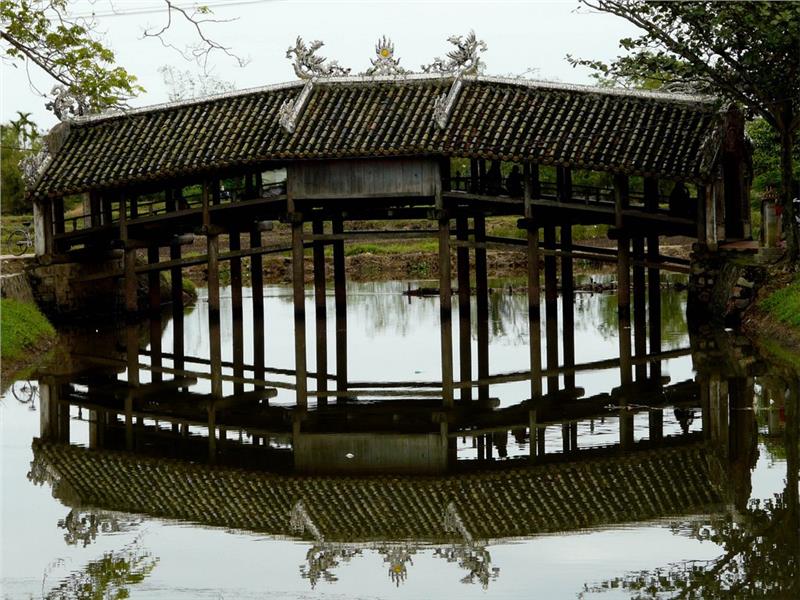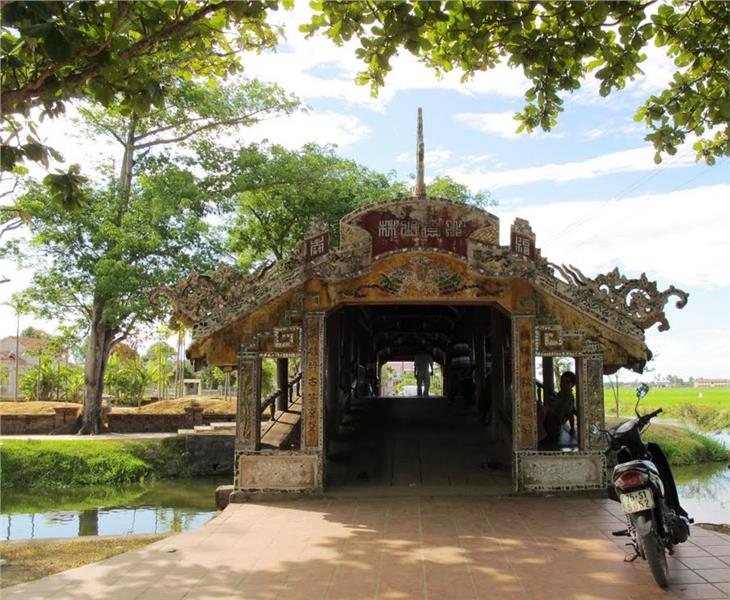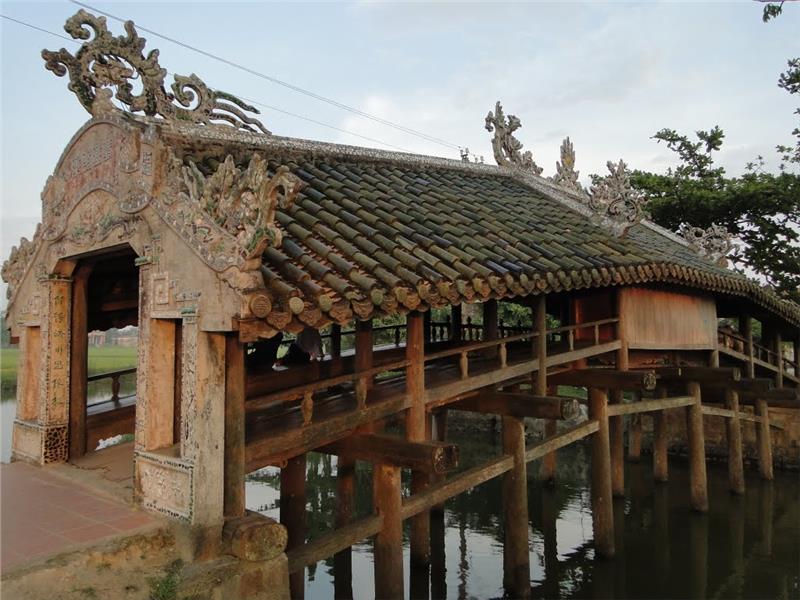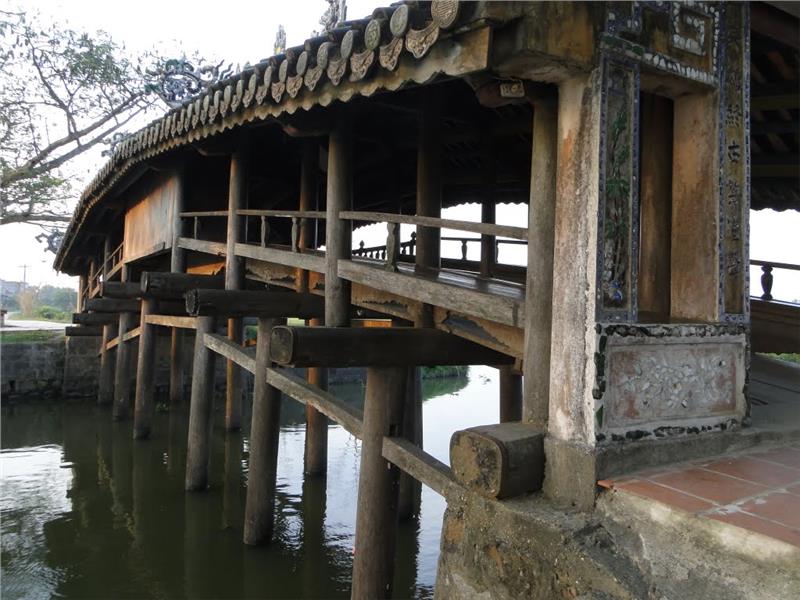Far about 8 km from Hue city to the east, Thanh Toan Bridge, also known as Thanh Toan tile roofed bridge is situated on a small ditch in Thanh Thuy village, Thuy Thanh Commune, Huong Thuy district, Thua Thien Hue province. Along with Japanese Covered Bridge - Hoi An, Thanh Toan tile covered bridge is classified as rare and have high artistic value in types of ancient bridges in Vietnam. Visiting Thanh Toan Bridge is one of the top things to do in Hue travel. This is one of 2 bridges retaining the most unique architectures in Vietnam today. Thanh Toan Bridge is a historical, cultural relic built on the style of "a house above a bridge" that is still intact nowadays. The bridge closely associating with the space overall of Thanh Thuy village including the system of clan ancestral house, temples, gardens with architectural style of quite unique is promisingly an ideal attractions for tourists to Hue tours.

With a length of 16,85m and 4,63m wide, the bridge is divided into 7 compartments. Looked at from afar, the bridge brings the look of a traditional house. Once setting foot in the bridge, tourists increasingly realize much more clearly thanks to the layout and furnished way. 7 compartments seem to be 7 small rooms in a big house. Inside the house, tourists can easily find ancestral altars and the place for living beside places of worship. Here, the bridge also provides the altar to worship the constructor of the bridge. The altar is located in the nave to express the devotion to benefactors. All of the 6 rest compartments offer wooden platform both sides to rest. They take the form the bed or furniture on display in the family.

At the end of the bridge' foot is a large land area for living, entertainment and marketplace. There is also a communal house for organizing community activities. It is said that the market previously was not large as it is now. The local people just sold small items such as vegetables, fish... The people are self-employed, self-fishing and brought here to self-talk to each other, which formed a village market. The life gradually develops; the items increasingly appear much more diverse. As a result, forms of trading are also much larger. Yet it still remains something of the rural market in Vietnam. Perhaps strongly influenced by identity of the village, this place is always chosen as the countryside fair on days of Hue Festival, attracting numerous tourists to Hue travel.

Unlike other bridges in Hue, the architecture of Thanh Toan tile roofed bridge is quite unique. The bridge is located on the pillar system with 3 rows, each row of which retains 6 pillars made of stone. All have a common wood tenon to fight depression. Connecting the joints in both sides of two bridgeheads is the system of supporting pillars. The longitudinal concrete bars from 2 inputs gradually sloping up create the crease in both the bridge’s surface and the roof; simultaneously, lift the culvert in the middle up in order to make a beautiful and healthy height for boats to easily pass. The architectural elements are entirely made of wood. Interestingly, they are not carved or decorated, but include two motif types of circular and square cross-sections to create beauty. In particular, artisans carved symbols with theme of 4 sacred animals, namely Dragon - Unicorn - Turtle – Phoenix on the bridge’s roof.

Over 200 years of formation and development in an area with lots of natural disaster and important historical events, the bridge has been still as intact as early appearance. It still retains high artistic values in the collection of ancient bridge architecture in Vietnam. The existence of Thanh Toan tile roofed bridge not only takes the function to welcome the locals back and forth, but it also brings profound aesthetic and humanistic values. No longer is Thanh Toan the name unfamiliar to tourists, it gradually becomes one of the most appealing attractions in Hue travel.
